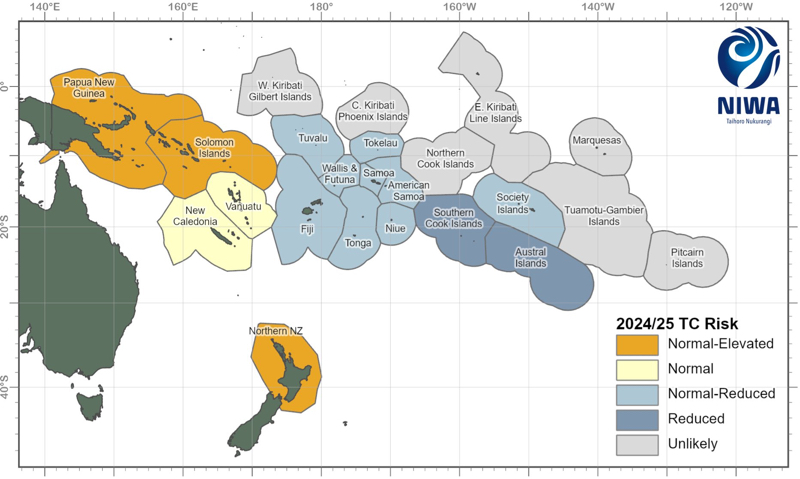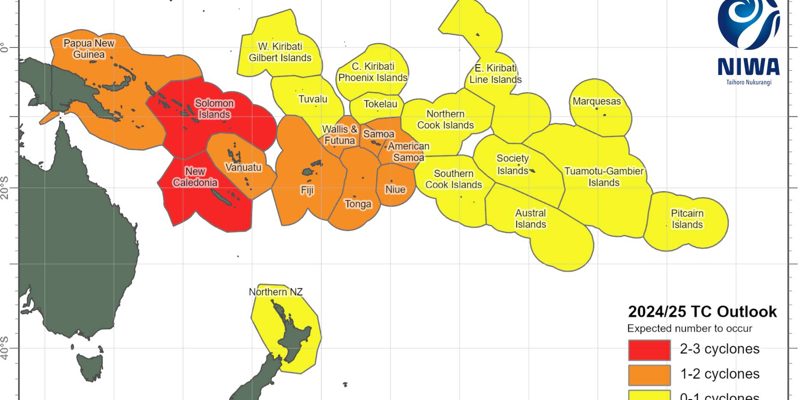The Pacific’s eastern islands can expect an usual or below-par cyclone season, according to New Zealand’s climate and forecasting agencies.
On Wednesday, NIWA and MetService released their modelling for the upcoming tropical cyclone season which runs from November to April.
It is a milder projection for six to 10 cyclones overall, compared with last year’s outlook which tipped nine to 14.
Solomon Islands and New Caledonia are the two countries most at risk of tropical cyclones, likely to face two to three storms of at least category one strength.
Papua New Guinea, Vanuatu, Wallis and Futuna, Fiji, Tonga, Samoa, Niue, and American Samoa are expected to face one to two cyclones.
The rest of the southwest Pacific – a zone that includes islands below the equator, as far west as Queensland and as far east as the Pitcairn Islands – are tipped for zero to one cyclones.
The outlook still warns that tropical cyclones (TCs) could happen anywhere in the region.
“Between 3-4 severe TCs reaching category three or higher may occur anywhere across the region, so all communities should remain prepared,” it reads.
Only three countries are seen at an elevated risk: Solomon Islands, PNG and New Zealand’s North Island.
NIWA forecaster Ben Noll said the forecast was built on previous patterns.
“When we look at assembling these outlooks we try to use history as a guide and find years in the past that have climatic similarities,” he said.
“It suggested near-normal or slightly below average numbers. The average is nine (and) we think that six to 10 tropical cyclones is the most likely range.”
Cyclones are named when they hit category one on the Australian tropical cyclone intensity scale, which is sustained winds of 63km/h.
Last summer, there were eight of at least category one strength, just shy of the outlook’s projections.
The most severe was Lola, which hit Vanuatu as a category five storm in late October, the earliest in the season that a category five storm had emerged.
By Ben McKay in Wellington
AAP










